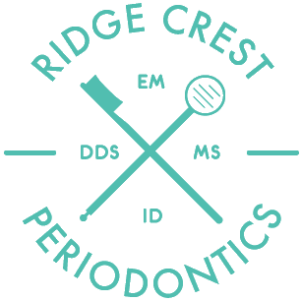
We get a lot of questions. And we have a lot of answers. Below you will find the most frequently asked questions that we get and detailed answers for those questions. If you don’t find the answer that you are looking for, give us a call and we’ll do our best to help you get the information that you need!
Periodontal disease can typically be caught early provided patients schedule regular dental or periodontal examinations (biannually). If you do not schedule regular dental cleanings or periodontal examinations and notice any of the following symptoms, this may be an indication that you have developed periodontal disease:
- Tender or swollen gums
- Gums that bleed easily
- Chronic halitosis that persists even after brushing your teeth
- Gum recession
- Teeth that have become loosened
- Unexplained mouth pain
- Mouth sores
- Pus between your gums and teeth
- Change in bite or fit/feel of dentures
- Unexplained tooth loss
If you have any of these symptoms, schedule an appointment with your periodontist today. If treated early enough, periodontal disease can usually be reversed.
Every patient will have a slightly different experience during their first periodontal exam. Your exam will typically begin with a review of your medical and dental history including any significant pre-existing medical conditions, allergies, or medications you may be taking.
Once this is complete, your periodontist will perform a thorough examination of your mouth including the health of your gums, the alignment of your bite, and the status of your teeth. During this examination, your periodontist will also look for indications of jaw dysfunction, gum recession, loss of bone, and/or periodontal disease. To determine whether or not periodontal disease is present, they will use a periodontal probe to measure the depth of the pockets in your gums. Healthy pockets are typically 4mm or less in depth. If any pockets are greater than 4mm, it will be necessary to determine the underlying cause and develop a treatment plan. If necessary, an x-ray or other diagnostic test may be taken to determine a diagnosis.
Once a proper diagnosis has been made, your periodontist will discuss available treatment options and answer any questions you have. Once a treatment plan has been determined, our treatment coordinator will be able to discuss a cost estimate for treatment and payment options with you.
To help ensure an efficient experience, please bring the following with you to your initial appointment:
- Referral form (if applicable) and X-Rays from your dentist
- Current list of medications
- Dental insurance card/information
If you are under the age of 18, you must be accompanied by a parent or guardian.
There are a range of factors that can impact the final cost of your initial visit to our office. The most common factor is whether or not diagnostic x-rays or a CT scan is necessary in order to develop a treatment plan tailored to your unique needs. Ultimately, the cost of your visit will be determined by the severity of your case. The majority of periodontal treatments (including the first visit) are typically covered, at least in part, by your insurance plan, which we will gladly bill on your behalf and have them reimburse you whatever their out of network rate is. While we are not in-network with any insurance company, it is important to bring your dental benefit information to your
appointment because we will help you maximize your benefits by filing your claims for you and having them send you payment. Please call our office if you need further information.
We accept all insurance and will file your claims for you. We are not in-network with any insurance companies, but we will help you utilize and maximize your benefits and have your insurance company reimburse you for your claims.
Our Periodontics and Dental Implant office is located in Idaho Falls in the Creekside Plaza, off of Sunnyside next to the Idaho Kidney Center.
Treatment costs will depend on a number of factors including the severity of the patient’s case, what type of procedures are performed, what diagnostic tests are required, whether or not the patient has insurance, and if they do, what type of insurance plan they have. Additional factors include the number of visits required to correct the issue, type of materials used (where applicable), and what type of dental sedation (if any) is used.
Most periodontal treatments are covered (partially or in full) by dental plans. However, it is beneficial to discuss anticipated costs and coverage with your insurance provider and/or our treatment coordinator prior to having procedures performed so you know what to expect.
If cost of treatment is of significant concern, we offer financing options which allow patients to pay for treatment costs over a period of time.
It’s always a good idea to discuss your options with a periodontist first. Dr. Moulton can explain the best way to create the smile you want, as well as answer any questions that you may have.
Dr. Moulton has been a dentist for over 19 years and has 13 years of experience as a specialist in Periodontics and Dental Implants.
Dr. Moulton holds an Advanced General Dentistry Certificate, a Comprehensive Restorative Dentistry Certificate and a Periodontics And Implant Surgery Masters of Science Degree.
We are available for emergency care and treatment for current patients. For new and current patients we provide an emergency consultation over the phone and can help to direct our patients to the right provider for their current dental emergency in Idaho Falls.
There are several procedures that can be performed by both a dentist and a periodontist. But periodontists are considered the best option for issues related to gum disease and/or the periodontium. Periodontists can perform a variety of procedures, ranging from preventative to cosmetic to surgical. For more severe cases of gum disease that have resulted in loss of teeth, periodontists may perform dental implants, full mouth reconstruction, and/or bone grafts, whereas in less severe cases, a periodontist may perform milder procedures, such as periodontal maintenance or scaling and root planing to halt or reverse the effects of gum disease. Where gum recession is indicated, a periodontist can also perform tissue grafting to provide root coverage and support to the tooth to prevent future problems. Oftentimes, general dentists and periodontists work in partnership to develop a comprehensive care plan that is individualized to a patient’s unique oral health care needs.
Dental plaque is a sticky film covering teeth. It is formed by saliva, proteins, and bacteria. Every time you eat, acids, particles, and sugars can get stuck on this plaque. Brushing your teeth, flossing, and rinsing regularly are often sufficient measures to remove the majority of this plaque. But there are times when plaque is not removed and allowed to build up. When plaque builds up over a period of time, it will eventually harden and turn into calculus.
When calculus forms, it can no longer be removed through traditional brushing and/or flossing. This requires a professional cleaning from a periodontist to be removed. If calculus is not removed early enough, gum disease can develop, which can cause a range of issues, including gum recession, jawbone deterioration, and eventually the loss of teeth.
One of the best methods for preventing plaque from building up and hardening into calculus is to follow proper oral hygiene self-care. Brush and floss your teeth twice daily, and be mindful of avoiding foods or beverages that are sugary or starchy; and if you do eat or drink these foods or beverages, rinse your mouth after doing so. It is also important to avoid using tobacco products — especially chewing tobacco.
For patients who have already developed calculus, it will be necessary to schedule an appointment to have the calculus professionally removed through a scale and root planing procedure or LANAP.
Periodontal surgery is typically avoided unless absolutely necessary; however, there are times when surgical intervention is the only treatment option that will allow you to best preserve and maintain your oral health.
Periodontal treatment will be determined by the nature and severity of your periodontal disease. To determine this, a thorough examination will be performed, which will involve the use of a specialized tool to measure the pocket depth of your gums. Gums that are healthy will have a pocket depth of 4mm or less, whereas pockets that are deeper than 4mm generally indicate that periodontal disease is present.
To treat periodontal disease, it will first be necessary to remove bacteria that has formed beneath the gums and then inhibit the ability for bacteria to collect and harden into tartar, which is done by a scaling and root planing procedure. Once the bacteria has been removed, additional procedures and steps can be taken to reduce your risk of developing periodontal disease and/or correct the impact periodontal disease has already had on your oral health.
Patients who have experienced gum loss may have a gum graft or Pinhole Surgical Technique procedure performed, whereas patients who have lost a tooth or teeth due to periodontal disease may have a dental implant or implants placed. For less severe cases of periodontal disease, improved at-home care and scheduling more frequent periodontal maintenance may be sufficient to correct the issue and prevent similar issues from developing in the future. Which type of periodontal treatment or treatment options are right for you will vary from patient to patient and be determined by your unique needs.
Periodontal disease can cause a range of issues that can be mild or severe. Milder cases of periodontal disease may result in your gums receding and the pockets of your gums to deepen. As these pockets deepen, more bacteria is allowed to collect, which in time can harden into calculus. This cannot be removed by normal brushing methods.
If left untreated, gums can begin to recede further, creating an uneven ratio of teeth and gums that many patients find aesthetically unappealing. Receded gums can also cause teeth to become loosened and eventually fall out.
Patients who have lost a tooth or teeth can experience a range of associated issues. Over time, the skin that surrounds your mouth will begin to sag resulting in an aged appearance. Missing teeth will also cause surrounding teeth to begin to shift and the underlying jawbone to deteriorate. If the jawbone deteriorates enough, it can become weakened to the point where it can no longer support a dental implant, at which point a dental bone graft will be necessary. The loss of teeth also impacts daily enjoyments, such as what foods can be eaten. Tooth loss can also cause patients to feel self-conscious or embarrassed by their physical appearance.
In addition to these negative impacts on your oral health, periodontal disease is also linked to cardiovascular disease and other health issues such as diabetes, arthritis, asthma, kidney disease, Alzheimer’s’, and more. Research has shown that periodontal disease may increase the risk for developing cardiovascular disease. Both periodontal disease and cardiovascular disease are chronic inflammatory diseases, so researchers believe that inflammation may account for the association between the two. Untreated periodontal disease can increase inflammation in the body, which may increase the risk for development of more severe health complications including cardiovascular disease. However, more research is needed to determine the exact relationship between the two conditions.
Unfortunately, everyone is at risk for developing periodontal disease. But there are several things you can do to reduce your risk. One of the most important steps you can take is to brush and floss your teeth twice daily. It is also important to avoid foods or beverages that are sugary or starchy; and if you do eat or drink these foods or beverages, rinse your mouth after doing so. Patients who are tobacco users are also at a higher risk of developing periodontal disease, so avoiding use of these products will make a significant reduction in your risk of developing periodontal disease. Finally, scheduling regular dental or periodontal exams (every six months or more frequently if necessary) is the best way to prevent periodontal disease from developing, or if it has already developed, correcting it before it increases in severity.
Scheduling regular visits with both your general dentist and periodontist is the best way to optimize your oral health and ensure that you receive individualized care that is delivered by a team that has a thorough understanding of your unique oral health issues and needs.
Our office and your dentist will work closely together. If implant crowns and fillings are needed, your dentist will provide them. Regular visits to your dentist are important and should continue even while you are completing your necessary periodontal therapy. Periodontal maintenance can be a shared responsibility with Dr. Moulton, the dental hygienist, your dentist and you.
Besides periodontal treatment and dental implants, we perform a number of procedures including:
- Crown lengthening
- Ridge augmentation
- Soft and Connective tissue grafting
- Pinhole Surgical Technique
- Gingival (gum) contouring
- Aesthetic crown lengthening
We offer our patients Nitrous, Oral Sedation, IV sedation, and General Anesthesia through Mountain View Hospital.
Over the counter pain medication and Rx pain medications as indicated.
Gum disease can lead to tooth loss and even death if left untreated. Find out more about this deadly condition!
What Is Periodontal Disease?
Periodontal Disease also called gum disease is an infection that affects the gums and bones around teeth. It causes inflammation in the mouth and can cause pain, bleeding, and bad breath. Gum disease can spread to other body parts, causing severe problems.
Gum disease is caused by bacteria that live in the mouth. These bacteria irritate the gums and lead to inflammation. Over time, the inflammation spreads into the bones surrounding the teeth. Eventually, the bones become so damaged that the teeth begin to fall out.
Periodontitis signs and symptoms
It’s time to schedule an appointment with the dental hygienist if you experience any of the following signs.
Swollen gums or gum tissue
Bleeding gum line
Bad breath
Gum Infection
Even if the above signs could potentially point to other illnesses, you still need to act right away.
Subsequent Effects of Periodontal Disease
Tooth decay and loose teeth are the most common complications of periodontal disease. However, periodontitis may also result in the following conditions:
Arthritis rheumatoid
Pregnancy complications
Alzheimer’s condition
Vascular conditions
Colon cancer
Obesity
In order to avoid significant complications for your teeth and gums along with the rest of your body, it’s critical to take action at the first signs and symptoms of periodontitis.
What are the major risk factors for periodontal disease?
Gum disease may run in the family. Therefore, if periodontitis runs in your family, you should take extra care to maintain good oral hygiene.
Smoking is a known independent risk factor for periodontitis. It may also impact how well a treatment works. This is the reason why smokers are a high-risk group.
Other risk factors include:
Hormonal changes
Diabetes
Poor oral hygiene
Alcohol consumption
Cancer
Stress
Medication
What happens if gum disease is left untreated?
Periodontitis is a serious condition that can result in a number of complications, including arthritis, heart disease, and tooth loss. It is possible to prevent periodontal disease if you maintain good oral health.
Please get in touch with your dentist right away for more advice on proper dental hygiene and preventing periodontitis.
Gum Disease Prevention tips
Brushing and flossing twice daily with ADA-approved fluoride toothpaste, is the best option to prevent gum disease. Floss once per day at least once every two weeks. Avoid smoking and chewing tobacco products. Limit sugar intake. And regular dental checkups with Ridge Crest Periodontics for a professional cleaning is advisable.
Do you have gum disease? Ridge Crest Periodontics Can Help!
To treat gum disease and advance excellent oral health, Elite Smiles provides a wide range of holistic dental treatments. Your needs-specific treatment plan will be created in collaboration with our skilled team of dentists and hygienists. to make an appointment or to find out more about our services!
At Ridge Crest Periodontics, we offer a wide range of dental options to help you treat gum disease and promote good oral health. Our experienced team of periodontist will work with you to create the best treatment plans that suits you. Call us today to learn more about our services or schedule an appointment.


